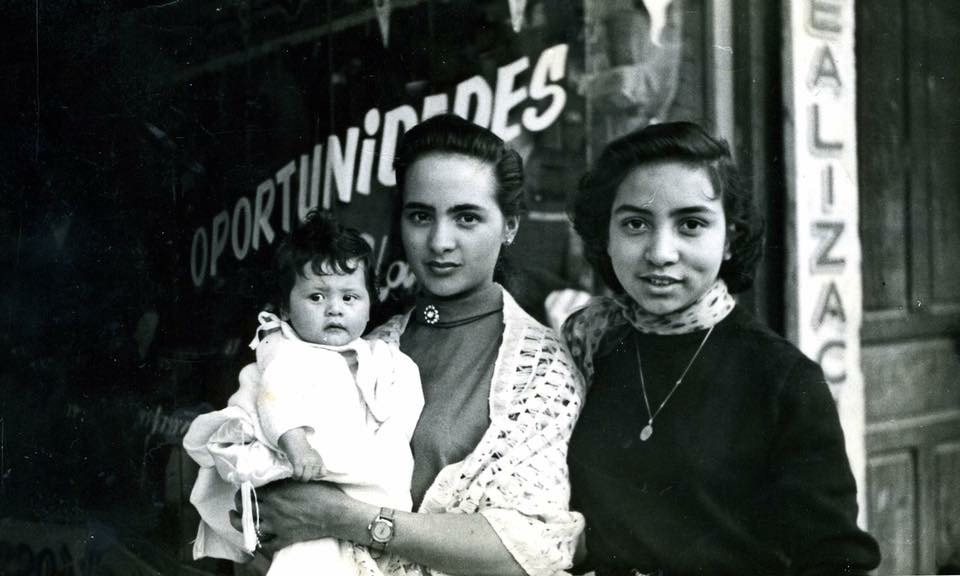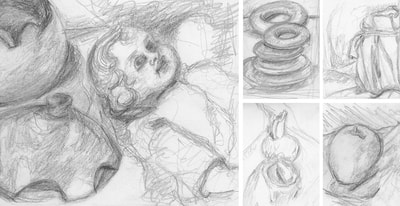1 Comment
When we came to the U.S. from Mexico in 1959, my mother brought along a simple cardboard box of family photos, which became, for me, a connection to the extended family we left behind in Mexico City. As I child, I often studied the faces in the photographs and connected them to obscured memories of our relatives and their facial features. That box held, and continues to hold to this very day, so many marvelous photos. While there are many exquisite pictures taken by my father and other family members, I have always been drawn to those taken by anonymous Mexican street photographers of the 1950s. The photographs shown above are two excellent examples of their skill. Both were shot in Mexico City near our home at 59 de la Calle de Republica de El Salvador in 1954. These street photographers typically covered specific blocks on a daily basis. They took candid shots of people going about their daily activities. After photographing their subjects, they provided them with a claim ticket, which was used to pick up their photos later that day. Although they had but a few seconds to take "the shot", by looking at the collection my family owns, I can say that each and every composition is striking. These photographers succeeded in capturing their subject's spirit, as illustrated in the photos above of these two beautiful Mexican women. Whoever these photographers were, I believe that they were undeniably talented and relentless in their pursuit of artistic expression. The black and white photo (above, left) was used in the above video, "This is To Mother You". It was recorded by Sinead O Connor, Mary J. Blige and Martha B., and was used by GEMS (Girls Educational & Mentoring Services) as a tool to spread awareness and to honor the many individuals who help in the fight against commercial sexual exploitation and domestic trafficking of American girls. To donate, click on the GEMS link.
I will soon finish this piece entitled "I See Red". It has been in progress for longer than I would like to admit. Over the years, it has undergone numerous transformations – none of which ever felt right to me. Certainly, all were "acceptable", but I was not satisfied.
"I See Red" was first explored as a small scale oil painting doll still life, then later on a wood panel because I wanted a sturdy support. Not pleased with a sheen on its surface, which I was never able to eliminate, it was abandoned. Months later, it was restarted on canvas, and has been painted over, and restarted several times. Finally in November of 2010, while quickly sketching the charcoal and pastel sketch above, I knew the direction I wanted to take this painting. I hope to finish it by the end of May. It is a mixed media piece, and has been since its conception. In fact, the mixed media element came first and the painting grew from that particular detail.  Sketch of Mimi Sketch of Mimi After reading the art 2: blog, Teaching with Rochelle Feinstein by Joe Fusaro, http://blog.art21.org/2011/04/20/teaching-with-rochelle-feinstein, I searched through some of my very old sketchbooks and came across from notes, and sketches. While I don't think I will use the abandoned art as suggested in the art 2: blog – I found some notes and a few insignificant thumbnails sketches I thought I'd share. Although I wrote these notes down, they are not my words but the words of various art professors who will remain nameless, because I cannot recall who said what during various art classes from years ago. Neither can I remember what I might have thought at the time that these words were being spoken, but I did indeed write them down perhaps because I thought them valid, or because I thought them odd. Who knows? What I do know is that as I looked through them today, I found some to be rather narrow-minded, but amusing nevertheless. ART: It's passionate quality lies in the subject matter as well as the very dramatic use of light and dark.
REALISM: Historically, abstract and realism do not work together. All realism deals with random, an extension of random is everyday. Realists (most) must understand what they're drawing. They know their range and are not inventive. They accept the world that they live in, often homebodies. Realists give people something they can draw from, something tangible. MARKS & COLOR: Consider consistency in your marks, i.e, soft marks, fluid marks, hard marks. White does not bridge, it separates. Consider using red – it stops. Or yellow, it slows down. Black does not represent "real". DRAWING & SKETCHING: Don't throw away your sketches. Consider using elements of drawings that worked in other drawings. The faster you work, the more likely you are to capture expression. Perspective does not exist in reality – it was created to give illusion. One point perspective in less dynamic than two point perspective. When drawing a room, never use the edge of paper to divide a room. Renaissance – worm's eye, Impressionism – eye level, Contemporary – bird's eye. ARTISTS: Baldessari: conceptual artist - deals with everyday phenomena https://artsy.net/artist/john-baldessari Caravaggio: realist painter http://en.wikipedia.org/wiki/Caravaggio Claudio Bravo: hyper-realist painter http://www.claudiobravo.com/en_biography_1.html Martin Puryear: sculptor http://www.moma.org/visit/calendar/exhibitions/28 Diego Velázquez: painter http://en.wikipedia.org/wiki/Diego_Vel%C3%A1zquez John Singer Sargent: painter http://en.wikipedia.org/wiki/John_Singer_Sargent Joseph Cornell: sculptor http://www.josephcornellbox.com Hieronymous Bosch: painter http://en.wikipedia.org/wiki/Hieronymus_Bosch Alice Neel: painter http://www.aliceneel.com/gallery Hollis Sigler: Chicago http://www.hammergallery.com/artists/Sigler/sigler.htm Lucien Freud: English http://www.tate.org.uk/britain/exhibitions/freud Seymour Rosofsky: Chicago https://en.wikipedia.org/wiki/Seymour_Rosofsky |
Archives
July 2024
Categories
All
|






 RSS Feed
RSS Feed